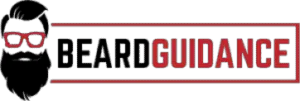We all want a full, thick beard. But even in the world of facial hair, there can be too much of a good thing. Growing and maintaining an attractive beard is all about balance. Nothing throws off that facial balance like beard hair growing high on the cheek toward the eyes.
To avoid the dreaded “wolfman” look, you should first decide exactly where you want your cheek-line to sit. This will prevent you from overshooting the mark when trimming. From there, you can shave. However, if you want a more long-term solution, you can explore options to pluck the hairs or remove them via lasers.
We’re aware, it can be pretty unnerving to see facial hair closing in on your eyes, but there are solutions. Let’s break them down.
Causes of Eye-Approaching Face Hair
Some guys are hairier than others. While that might seem reductive, it’s also a fact of life. Many guys struggle to fill out even the outline of a beard, while others are fighting a constant battle against the thicket on their faces.
Much of this has to do with hormones and blood flow to the face. Some men’s systems process testosterone more intensely. Some have more robust nutrient delivery from blood vessels around their follicle roots.
For many beardsmen, a strong, fast-growing beard is a mixed blessing. This type of facial hair can be unruly and tough to control. It can also cover more of the face than most guys would like. Into your thirties, you might start to notice your cheek hair is encroaching on your eyes.
High Facial Hair and Aging

All people, both men and women, experience strange, off-putting face hair as they get older. For all genders, it’s a result of declining estrogen levels.
Yes, men have estrogen, too. The levels are just much lower than in women. On the flip side, women’s bodies have testosterone at low levels.
Concerning facial hair, estrogen inhibits some growth. As it declines later in life, you might see hairs springing out where there was only bare skin before. If your beard already rides a little high on your mug, these new hairs might start creeping toward the top of your cheekbone.
In short, if you don’t remain vigilant, your silver fox phase will become a silver wolfman phase.
Drawing a Line
As a general rule, you should never start trimming a beard without a plan. If you just fire up the electric trimmer and begin hacking away, you’ll almost always overshoot the mark. Soon, you’ve evened things out until your neckline is up at your chin and your mustache is virtually nonexistent.
So, even when you’re just trying to rid your face of a few stray hairs that are getting too close to your eyes, you should still draw a line on your face and stick to it.
A decent rule of thumb for the cheekline of a full beard is to go from your earlobe to the corner of your mouth. We recommend you physically mark that line with some shaving cream. You might feel like you’re overdoing it, but as they say in woodworking: measure twice, cut once. With a clear lathered line, you will have a border above which there will be no hair, and below which you don’t need to trim.
Trust us: this will save you a lot of a la carte trimming and even more heartbreak over the results.
Trimming and Shaving
It is understandable for a beardsman to be out of practice with hair removal. Our whole aesthetic is built around not removing our facial hair. By the time you realize that your cheekline has risen above its station, you could have a fair amount of shaving ahead of you.
Setting down a pre-planned cheekline is a good starting point, but you also have to remove the hair smartly. While it might be tempting to start shaving away and ridding yourself of eye-encroaching beard hair, we suggest you make this a two-step process.
- Using the line you just drew as a guide, take a trimmer to the hair above. This will leave two clear areas on your cheeks: beard below the line and stubble above it.
- From there, you can apply shaving cream to the stubble above the line and give it a nice razor shave.
At this point, you should have cleared all the hair near your eyes and now have a cleanly trimmed beard with a defined cheekline.
Long-Term Solutions

Of course, if you see beard hairs near your eyes, that probably means your facial hair grows in fast, full, and thick. It’s only a matter of time – maybe even less than 24 hours – before those persistent follicles re-emerge. You can keep going back with a razor and chopping them back, or you can go with a longer-term solution.
Tweezer Plucking
Pulling out a hair by the base won’t completely eradicate it, but it will last longer than just shaving it down.
In total, you shouldn’t go with tweezing if you have more than a few errant follicles. If you only have a handful of eye-approaching hairs to remove, this is the least-involved solution. Just make sure to sterilize the tweezers before and after. Also, give your face a good wash post-tweezing, then apply some hydrating lotion.
At-Home Waxing
We all remember the waxing scene from The 40-Year Old Virgin. It haunts many of our dreams, but don’t let that dissuade you here. Waxing away unwanted cheek follicles is a cheap, quick, long-lasting removal option, and it’s much less painful than Steve Carell’s unfortunate torso-hair adventure.
One note of caution, though: do a small patch first, just to confirm you’re not allergic to the wax.
Lasers!
Laser treatment does more than remove hair; it actually damages the follicle root, making it a semi-permanent option. In many cases, once the hair is lazed, it never comes back!
Neither at-home treatments nor a visit to the spa is especially cheap, but the peace of mind might be worth it.
A Growing Concern
With all this discussion of shaving and tweezing and expanding beard coverage, you might feel apprehensive about razoring or plucking these hairs. After all, won’t that result in more hairs coming back in their place?
In general, you don’t need to worry about beard creep as a result of hair removal. The old worry about two hairs growing back from one hair plucked is a total myth.
Your Plan of Action
It’s always weird to see beard hair near your eyes, but it shouldn’t be a cause for panic or dread. Most likely, this growth is the result of genetics or just a peculiarity of getting older. What’s more, it is a problem that is easily solved.
Besides, you can use this minor annoyance as an excuse to shape up the old face-mane. While you put together your plan of action, look at our tips on shaving directions.

